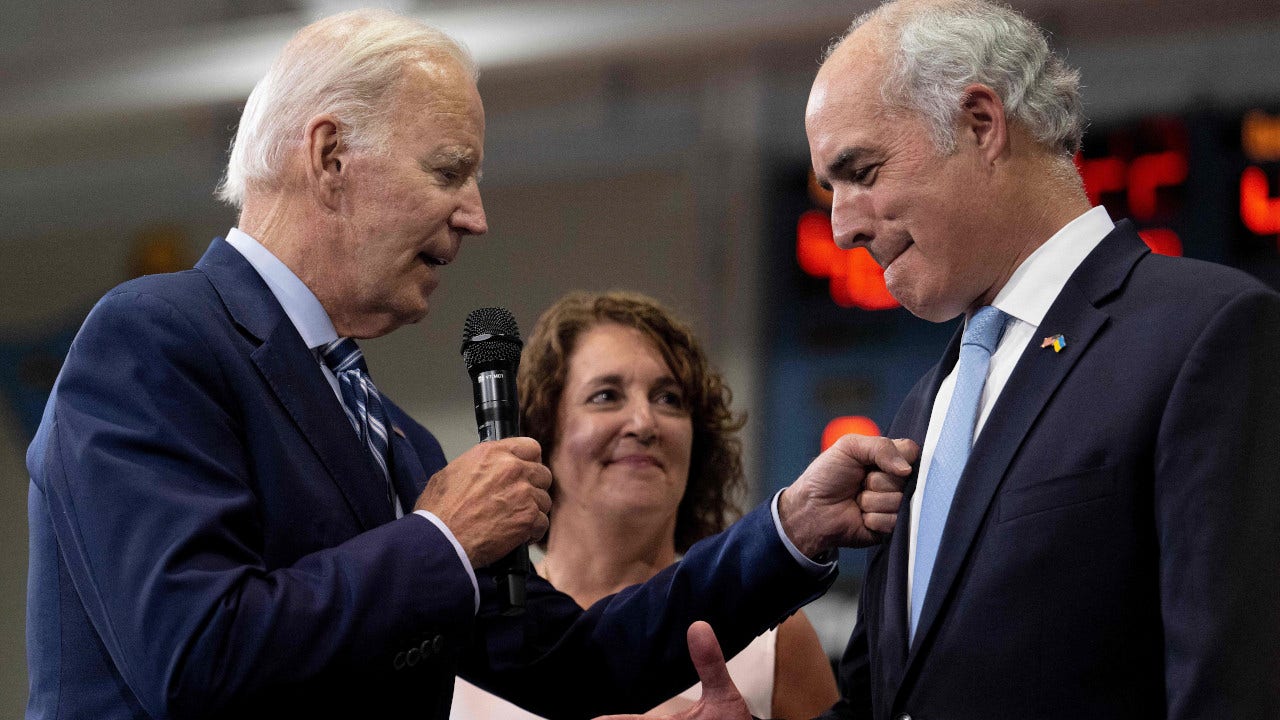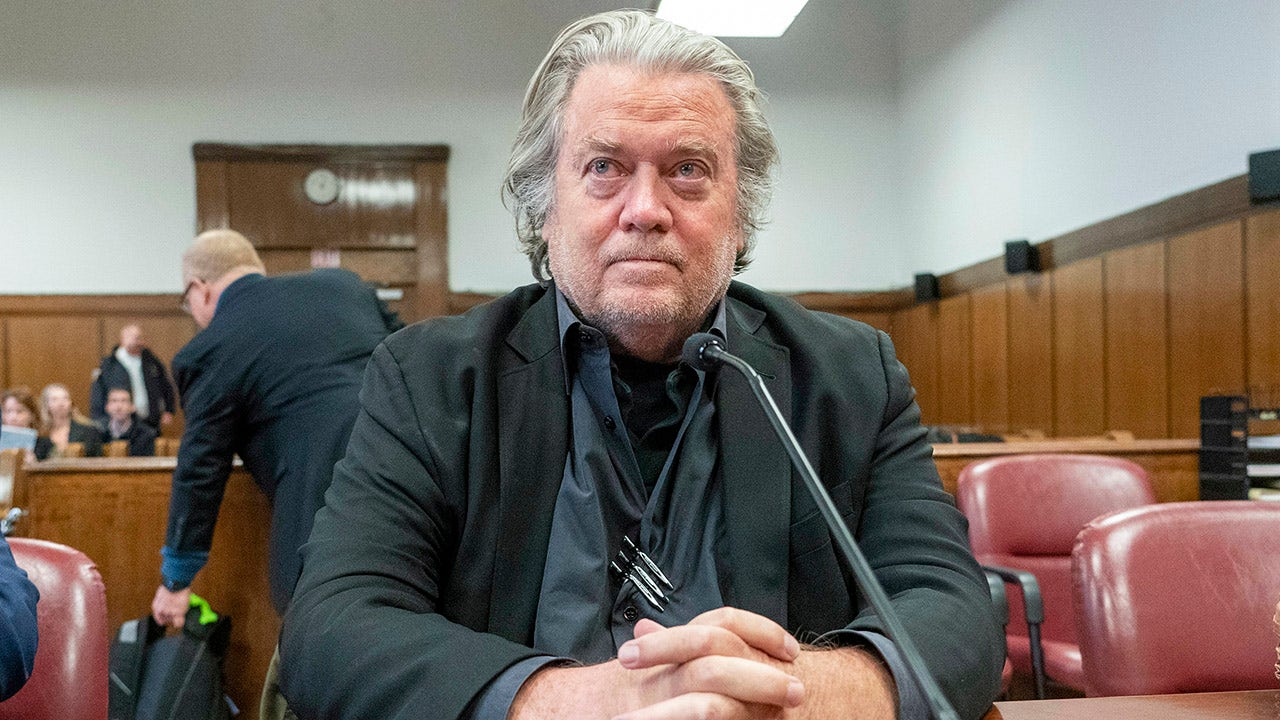Northeast
Karen Read supporters, critics clash outside court as jurors fail to reach verdict in police officer's death
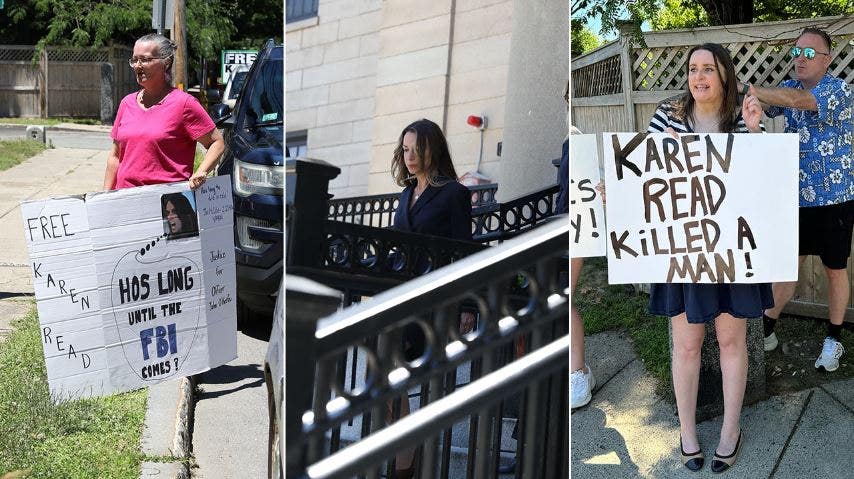
Karen Read trial draws large groups of spectators
Read, facing charges in the death of her Boston Police officer boyfriend, John O’Keefe, is getting support and dissent from people who are virtually tailgating outside the courthouse. (Patriot Pics/Backgrid for Fox News Digital)
Supporters and critics of Karen Read, on trial for the murder of John O’Keefe, her onetime Boston Police officer boyfriend, clashed Friday outside a Massachusetts courthouse where jurors failed to reach a verdict in the case.
“Free Karen Read!” supporters shouted as detractors held signs that said “Rot in Jail” and “Guilty.”
“You look at the evidence, the fact that the laws of physics dictate that he wasn’t touched by a car,” a supporter of Read, 44, told Fox News Digital Friday.
SEE PHOTOS: Karen Read’s supporters
“You have both the state’s (medical examiners) saying that the injuries were not due to a car accident, and then you have two forensic pathologists that’s for the defense also saying the same thing. The fact that this was brought to trial is ridiculous.”
WE ARE ‘AT THE FINISH LINE’ OF THE KAREN READ CASE: MERCEDES COLWIN
Boston Police Officer John O’Keefe. (Boston Police Department via AP)
One of her critics, holding a sign that said “Karen Read Killed a Man,” told Fox News Digital, “I feel like in the criminal justice system there never is a smoking gun. There shouldn’t be. It’s the totality of evidence that either exonerates or incriminates someone, and the totality of the evidence points to Karen Read and no one else, from her vehicle data to the victim’s GPS data, to the taillight near the scene, to the taillight in his clothing. The DNA results. Everything points to Karen.”
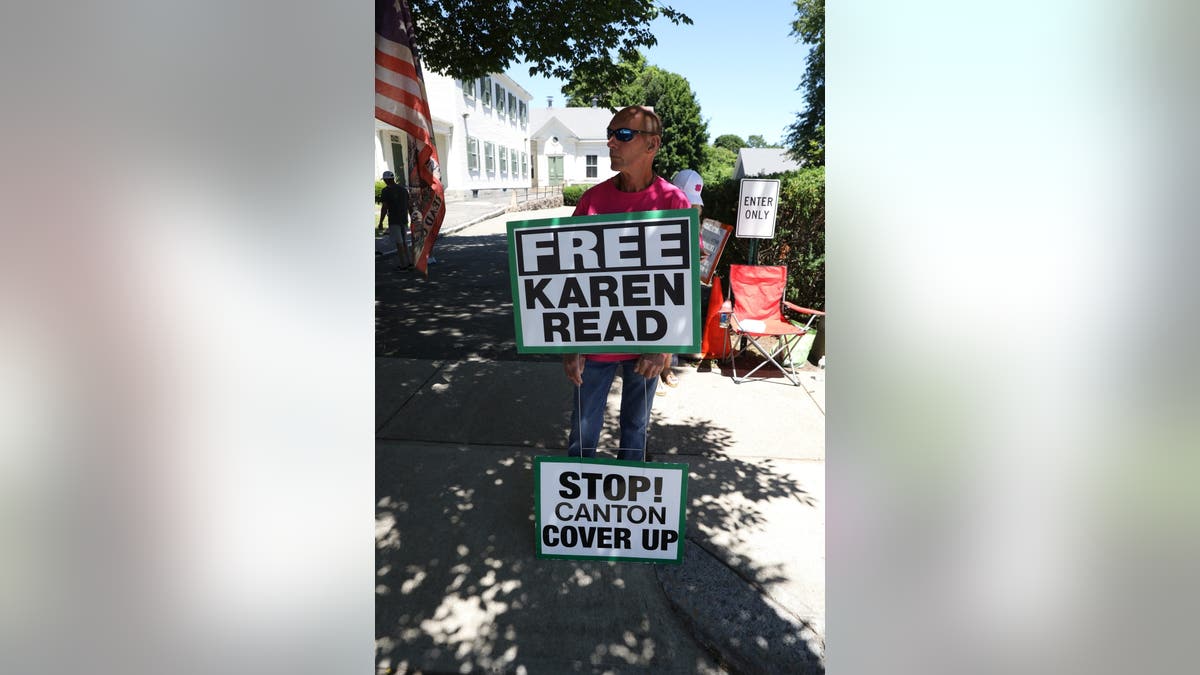
A Karen Read supporter holding a sign. (Patriot Pics/Backgrid.)
Read’s critics claim some of her supporters have harassed O’Keefe’s family.
“Every day, these witnesses are getting death threats. It is just disgusting to John’s memory,” Julie Guinto told reporters outside the courthouse.
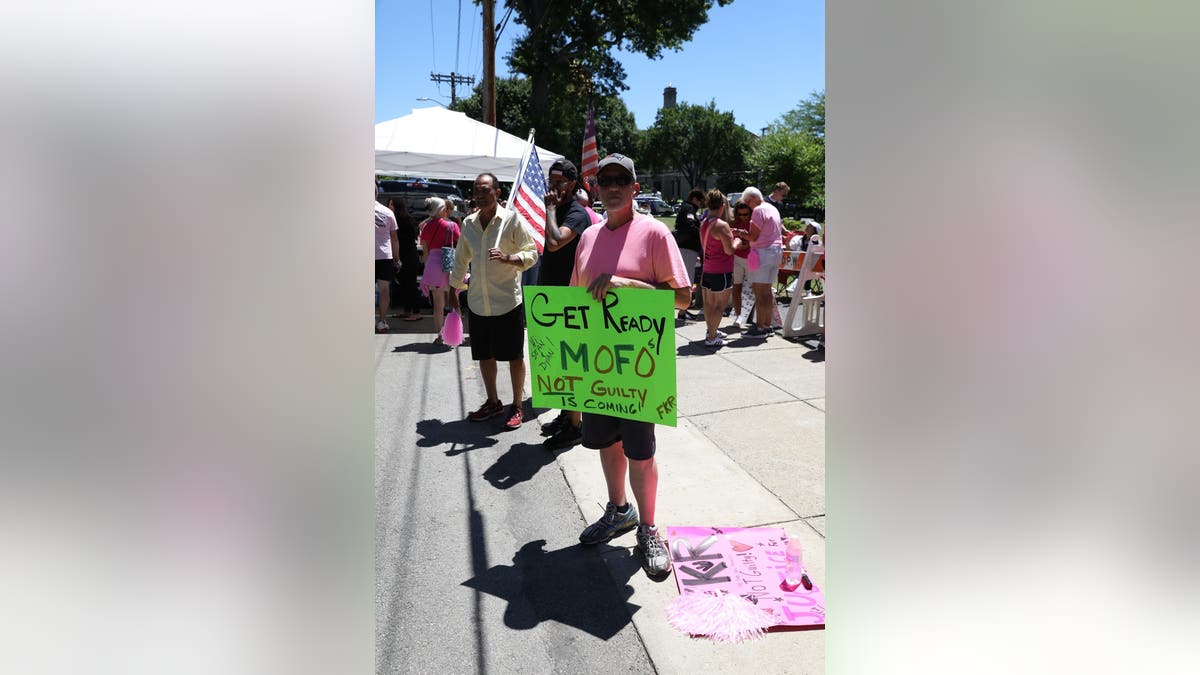
A Karen Read supporter stands outside the courthouse Friday holding a sign. (Patriot Pics/Backgrid.)
Her supporters are blaming police “corruption.”
“This is unbelievable. The poor woman has been framed,” Michael Ward told reporters. “This not only hasn’t been proven, but what’s been proven is she’s innocent.”
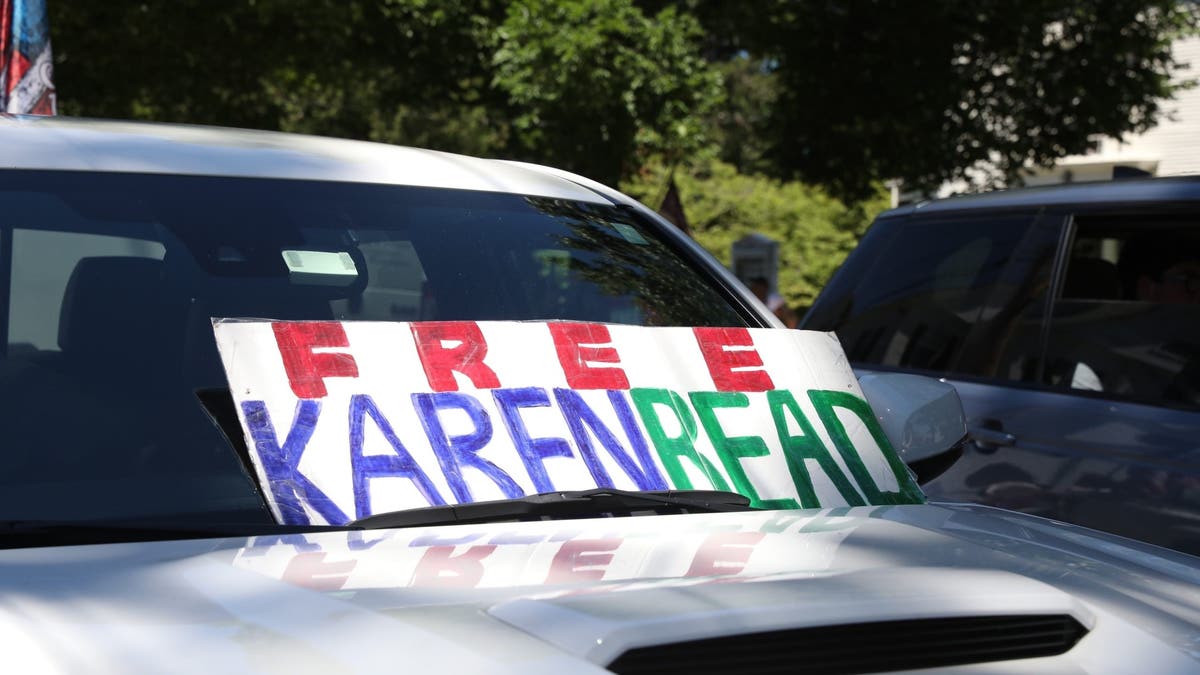
A “Free Karen Read” sign on a car. (Patriot Pics/Backgrid.)
Read is accused of angrily plowing into O’Keefe, 46, with her SUV while drunk in January 2022 and leaving him to die in the snow.
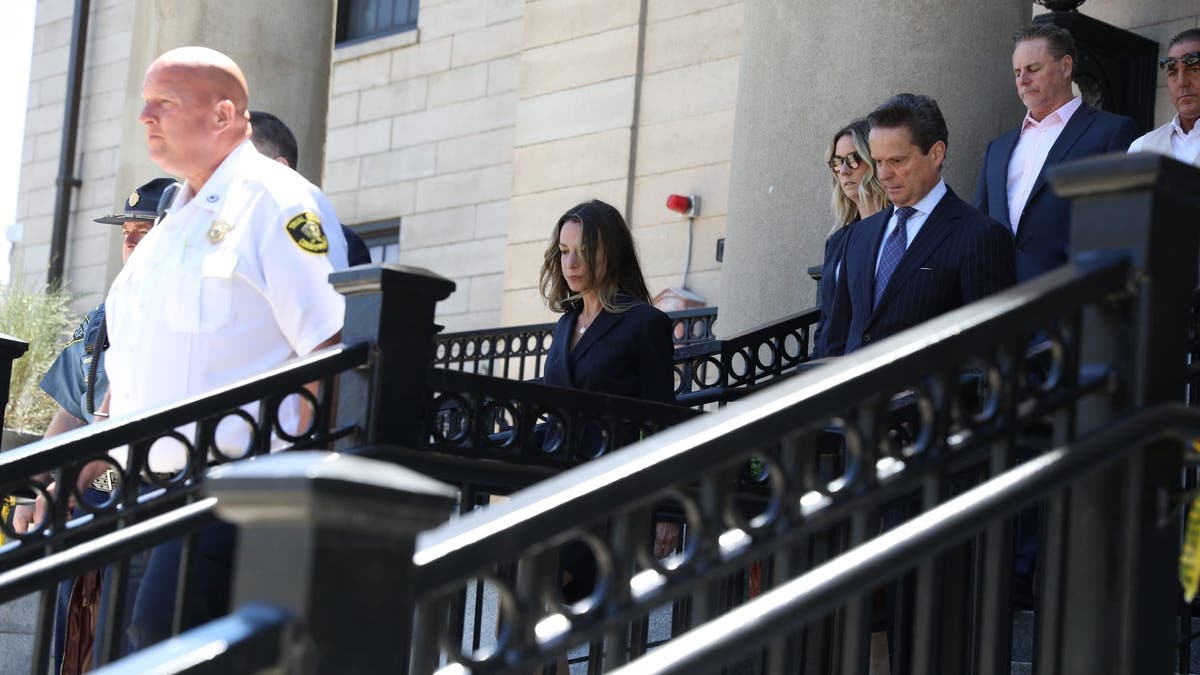
Karen Read leaving the courthouse. (Patriot Pics/Backgrid.)
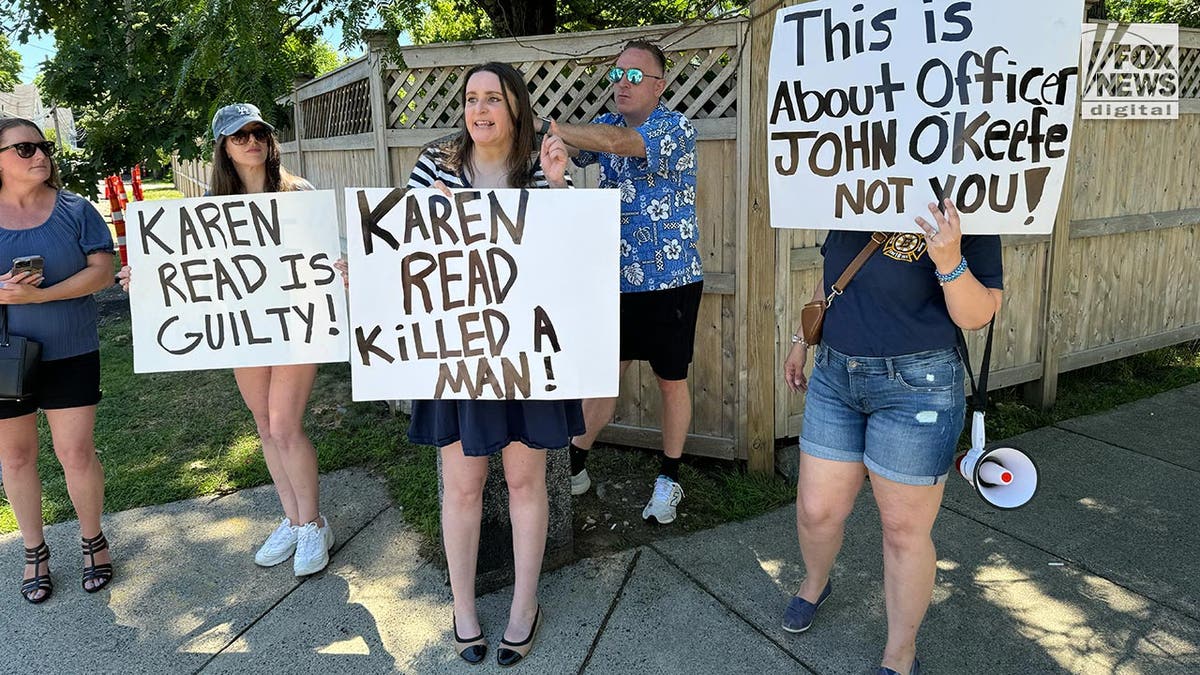
Critics of Karen Read gather outside the courthouse in Dedham, Mass., on Friday. (Patriot Pics/Backgrid for Fox News Digital)
KAREN READ MURDER TRIAL DASHCAM EMERGES FROM NIGHT OF POLICE OFFICER BOYFRIEND’S DEATH
Jurors — six men and six women — in the two-month trial are expected to return for a fifth day of deliberations in the Dedham courtroom outside Boston Monday after failing to reach a verdict Friday in the case that has drawn national attention.
Read’s defense team has argued she was framed by colleagues of O’Keefe who killed him and dumped his body.
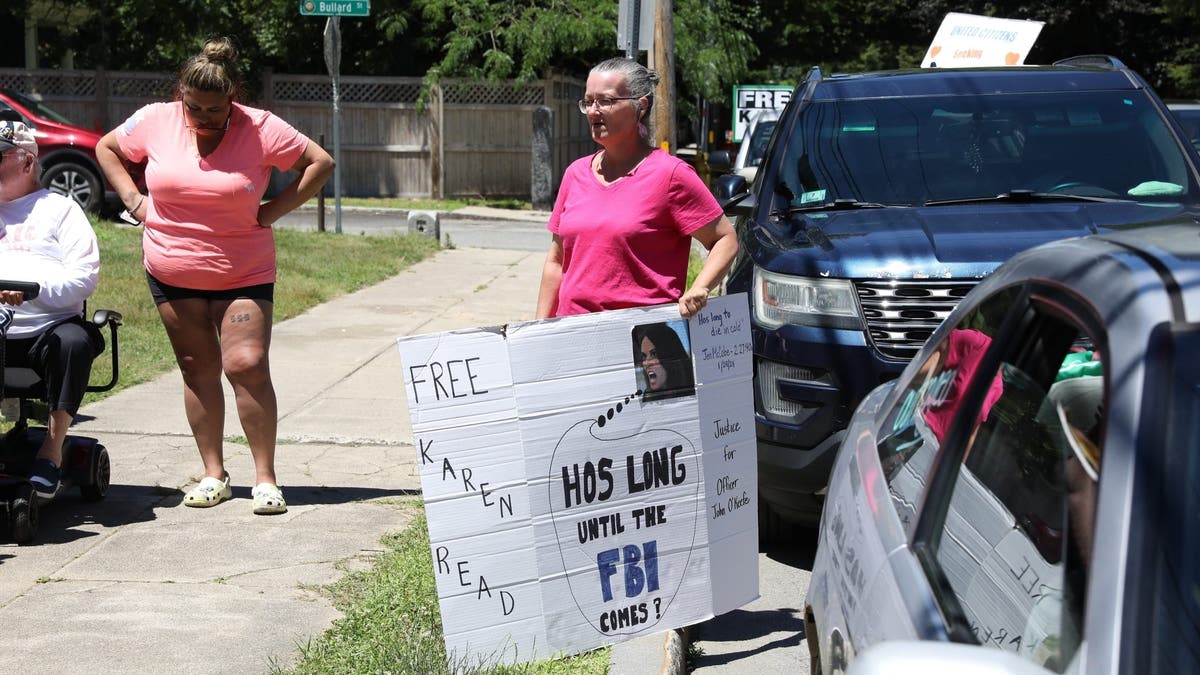
Karen Read supporter outside the courthouse. (Patriot Pics/Backgrid.)
Many of Read’s supporters have shown up every day of her trial, but Friday was the first day they were confronted by those who believe she’s guilty.
The Associated Press contributed to this report.
Read the full article from Here

New York
We Counted 22,252 Cars to See How Much Congestion Pricing Might Have Made This Morning

Today would have been the first Monday of New York City’s congestion pricing plan. Before it was halted by Gov. Kathy Hochul, the plan was designed to rein in some of the nation’s worst traffic while raising a billion dollars for the subway every year, one toll at a time.
A year’s worth of tolls is hard to picture. But what about a day’s worth? What about an hour’s?
To understand how the plan could have worked, we went to the edges of the tolling zone during the first rush hour that the fees would have kicked in.
Here’s what we saw:
Video by Noah Throop/The New York Times; animation by Ruru Kuo/The New York Times
You probably wouldn’t have seen every one of those cars if the program had been allowed to proceed. That’s because officials said the fees would have discouraged some drivers from crossing into the tolled zone, leading to an estimated 17 percent reduction in traffic. (It’s also Monday on a holiday week.)
The above video was just at one crossing point, on Lexington Avenue. We sent 27 people to count vehicles manually at four bridges, four tunnels and nine streets where cars entered the business district. In total, we counted 22,252 cars, trucks, motorcycles and buses between 8 a.m. and 9 a.m. on Monday.
We wanted to see how the dense flow of traffic into the central business district would have generated money in real time.
Though we can’t know that dollar amount precisely, we can hazard a guess. Congestion pricing was commonly referred to as a $15-per-car toll, but it wasn’t so simple. There were going to be smaller fees for taxi trips, credits for the tunnels, heftier charges for trucks and buses, and a number of exemptions.
To try to account for all that fee variance, we used estimates from the firm Replica, which models traffic data, on who enters the business district, as well as records from the Metropolitan Transportation Authority and city agencies. We also made a few assumptions where data wasn’t available. We then came up with a ballpark figure for how much the city might have generated in an hour at those toll points.
The total? About $200,000 in tolls for that hour.
Note: The Trinity Place exit from the Brooklyn-Battery Tunnel, which would have been tolled, is closed at this hour.
It’s far from a perfect guess. Our vehicle total is definitely an undercount: We counted only the major entrances — bridges, tunnels and 60th Street — which means we missed all the cars that entered the zone by exiting the Franklin D. Roosevelt Drive or the West Side Highway.
And our translation into a dollar number is rough. Among many other choices we had to make, we assumed all drivers had E-ZPass — saving them a big surcharge — and we couldn’t distinguish between transit buses and charter buses, so we gave all buses an exemption.
But it does give you a rough sense of scale: It’s a lot of cars, and a lot of money. Over the course of a typical day, hundreds of thousands of vehicles stream into the Manhattan central business district through various crossings.
Trips into tolling district, per Replica estimates Note: Data counts estimated entrances on a weekday in spring 2023. Source: Replica.
Queens-Midtown Tunnel
50,600
Lincoln Tunnel
49,200
Williamsburg Bridge
27,900
Manhattan Bridge
24,000
Brooklyn-Battery Tunnel
23,100
Queensboro Bridge
21,700
Brooklyn Bridge
17,100
Holland Tunnel
15,400
All other entrances
118,000
Total
347,000
The tolling infrastructure that was installed for the program cost roughly half a billion dollars.
The M.T.A. had planned to use the congestion pricing revenue estimates to secure $15 billion in financing for subway upgrades. Many of those improvement plans have now been suspended.
Methodology We stationed as many as five counters at some bridges and tunnels to ensure that we counted only cars that directly entered the tolling zone, not those that would have continued onto non-tolled routes.
Our count also excluded certain exempt vehicles like emergency vehicles.
We used estimates of the traffic into the district to make a best guess at how many of each kind of vehicle entered the zone. Most of our estimates came from the traffic data firm Replica, which uses a variety of data sources, including phone location, credit card and census data, to model transportation patterns. Replica estimated that around 58 percent of trips into the central business district on a weekday in spring 2023 were made by private vehicles, 35 percent by taxis or other for-hire vehicles (Uber and Lyft) and the remainder by commercial vehicles.
We also used data on trucks, buses, for-hire vehicles and motorcycles from the M.T.A., the Taxi and Limousine Commission and the Department of Transportation.
For simplicity, we assumed all vehicles would be equally likely to enter the zone from 8 a.m. to 9 a.m. as they would be in any other hour. We could not account for the other trips that a for-hire vehicle might make once within the tolled zone, only the initial crossing. And we did not include the discount to drivers who make under $50,000, because it would kick in only after 10 trips in a calendar month.
Boston, MA
Boston Celtics Going Up For Sale After Winning Record 18th Championship

Buy low, sell high.
That seems to be the strategy at work in recent sales of NBA teams, the most recent being the storied Boston Celtics. The club’s ownership group, Boston Basketball Partners L.L.C., announced today its “intention to sell all the shares of the team.”
The sale is likely to set a record for an NBA franchise.
The announcement comes just weeks after the Celtics won a record 18th NBA Championship. It also comes just hours after the team locked in the core players who won that championship, including Jayson Taytum, who got the largest contract in league history today (a five-year, $315 million deal) and Derek White (a four-year, $125.9 million extension).
In fact, many observers say the league has never been this stacked, talent-wise, with foreign players expanding the talent pool and a potential must-see prodigy now attached to one of the league’s flagship franchises after 20-year-old (and 7’6″) Frenchman Victor Wembanyama signed with the San Antonio Spurs.
Also fortuitous: The NBA is on the cusp of what should be it’s biggest media rights deal ever, thought to be worth about $76 billion. That deal is expected by many to be the peak of such agreements for the league, with subsequent deal totals declining. It is further expected to be coupled with exorbitant expansion fees in coming years as the league looks to expand its number of teams. Those fees are shared among owners of existing franchises. The last NBA media rights deal had a nine-year term. The upcoming agreement is expected to be along those lines, time wise.
Case in point is the team the Celtics beat last month to win the championship. Dallas Mavericks owner Mark Cuban — no slouch himself at the art of “buy low, sell high” — received approval in December to sell the team for about $3.5 billion. That’s a cool $3-plus billion over his purchase price and Cuban will reportedly retain 27% of the team and may well retain control of basketball operations.
According to Yahoo Sports, Cuban has expressed concern that the broadcast deal after this one (likely after 2030) could fall victim to the sports broadcast rights bubble bursting.
The record valuation for an NBA team is the $4 billion Matt Ishbia agreed to in 2022 for the Phoenix Suns. While Phoenix is a hot market with and has a good roster, it doesn’t come close to the reigning champs, who have better players from top to bottom, a rabid fan base and arguably the greatest lore of any team in the league.
Sources cited by Sports Business Journal “suspect the team could sell for well above $5B, after Forbes valued the franchise at $4.7B in 2023.”
Boston Basketball Partners LLC said the sale is being made “for estate and family planning considerations. The managing board expects to sell a majority interest in 2024 or early 2025, with the balance closing in 2028.”
Pittsburg, PA
9/11 National Memorial Trail one step closer to being completed

SHANKSVILLE, Pa. (KDKA) — On Monday morning, Western Pennsylvania National Parks Superintendent Stephen Clark made a big announcement.
“I have been so looking forward to this day where I could say that the 9/11 National Memorial Trail alignments, through three of the National Park units in Western Pennsylvania, have been completed.”
The completed alignment now connects the Flight 93 Memorial in Shanksville to the Johnstown Flood National Memorial and the Allegheny Portage Railroad National Historic Site. And this small portion of the 1,500-mile 9/11 Memorial Trail ultimately connects the Flight 93 Memorial to the other Sept. 11 sites in New York and Virginia.
The National Park Service says that connecting all these state and federal lands into one trail system wouldn’t be possible without the work of the nonprofit group the September 11th National Memorial Trail Alliance.
Two alliance members from Pittsburgh, Daniel Wille and Matt Harris, were on hand on Monday to not only hear the official announcement but to ride a portion of the trail.
Wille says that he hopes this trail will help bring a divided country back together.
“This trail is a remembrance,” said Wille. “It’s a connectivity, and an attempt to provide a positive view of America that I feel we are losing. And I feel it gives us hope. It gives us all hope that as this thing develops, Americans will kind of find their place again and their strength.”
The 9/11 Memorial Trail is still a work in progress, but at least this on and off-road section is open for folks to explore and remember the victims and the heroes of 9/11.
-

 News1 week ago
News1 week agoA Florida family is suing NASA after a piece of space debris crashed through their home
-

 World1 week ago
World1 week agoIsrael accepts bilateral meeting with EU, but with conditions
-

 World1 week ago
World1 week agoIsrael will be the ‘ultimate loser’ in war with Hezbollah, Iran says
-

 World1 week ago
World1 week agoNew Caledonia independence activists sent to France for detention
-
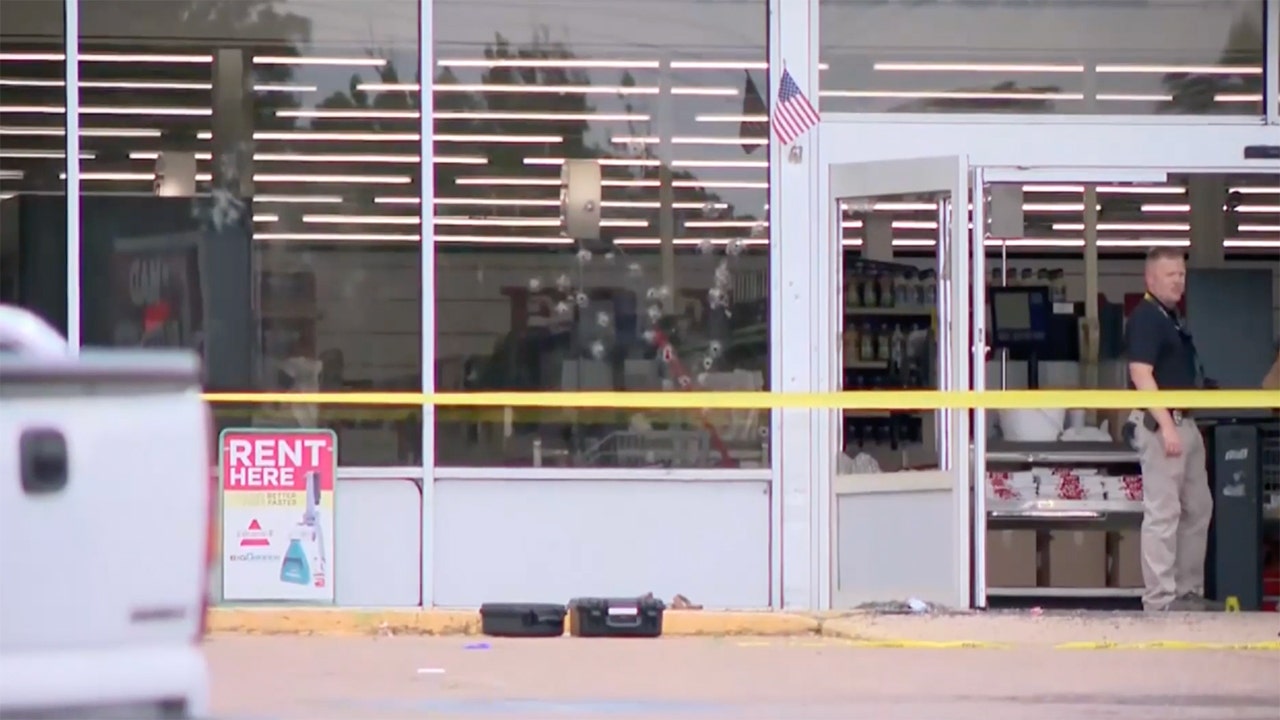
 News1 week ago
News1 week agoArkansas police confirm 4th victim died in grocery store shooting
-

 Politics1 week ago
Politics1 week agoTexas Lt. Gov. Dan Patrick pledges to pass Ten Commandments bill after Louisiana passes similar law
-

 World1 week ago
World1 week agoNetanyahu says war will continue even if ceasefire deal agreed with Hamas
-
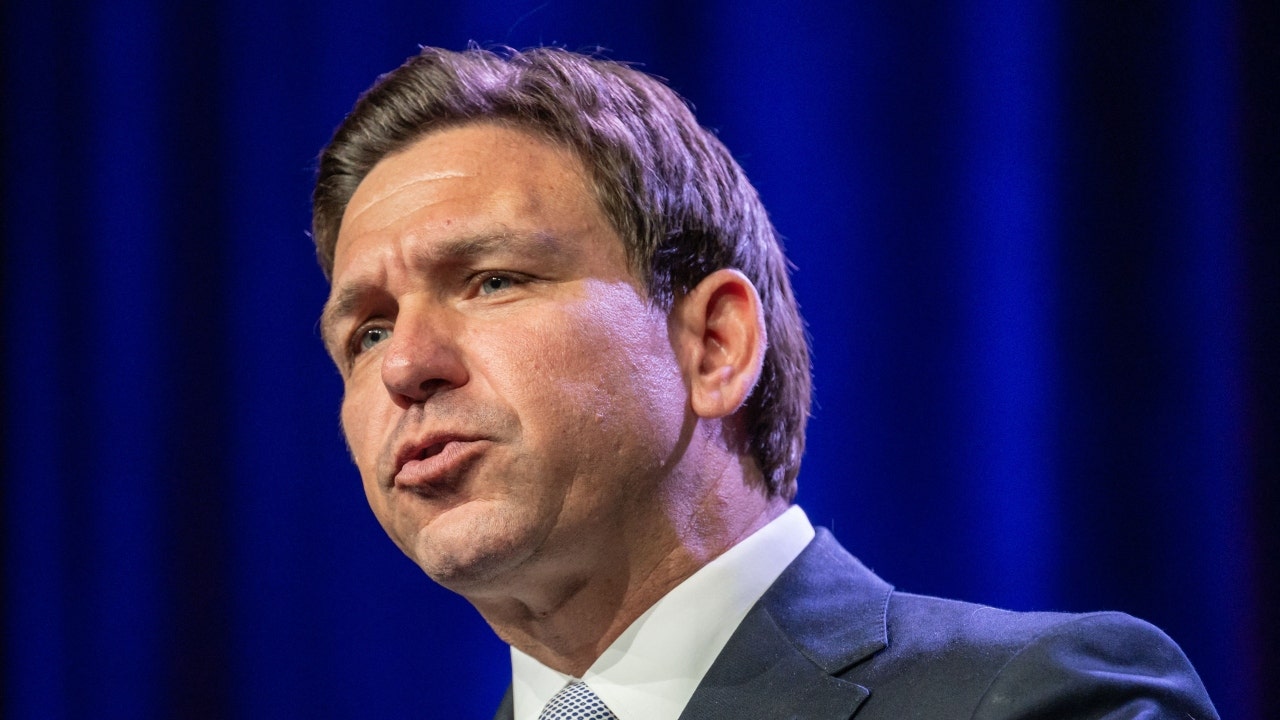
 Politics1 week ago
Politics1 week agoDeSantis signs bill allowing residents to kill bears, vetoes bill that fines slow left lane drivers










